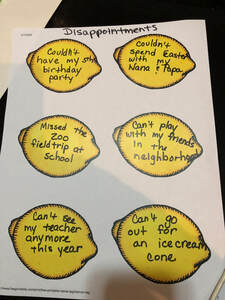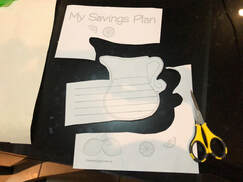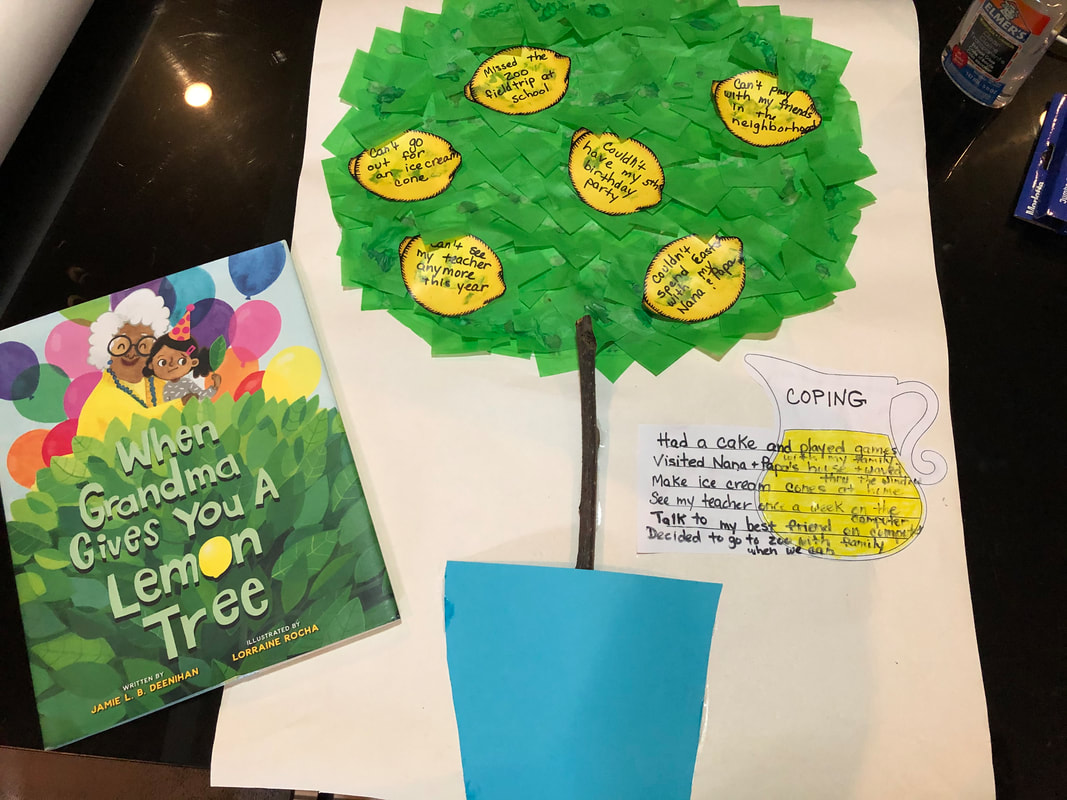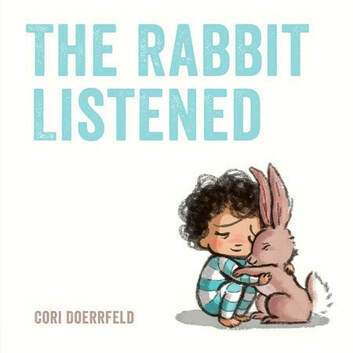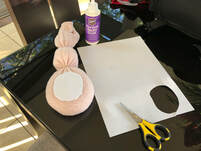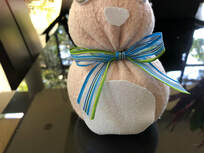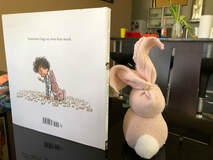A Book Review of When Grandma Gives You A Lemon Tree
Schools and day cares are closed, meaning time with friends, relationships with teachers, special school events and our day to day routines-CANCELLED. Extra classes and team sports-CANCELLED. Holidays with family and friends-CANCELLED. Playing with friends in the neighborhood-CANCELLED. Time with Grandma and Grandpa-CANCELLED. Their 5th birthday party-CANCELLED. And that doesn't even count Mom and Dad's disappointments! These disappointments and major changes in routine have a big impact on young children too, who don't fully understand why this is happening OR, more specifically, why so many things are NOT happening! In my practice, I have found that young children are usually adept at understanding and identifying general emotions, such as, happy, sad, scared, and mad, but are less adept at understanding more specific emotions such as DISAPPOINTMENT. Sure, we are all feeling all of those general emotions right now and disappointment can be a combination of some of those. However, the more specific a young child can be about understanding and articulating exactly how they are feeling, the less the likelihood of major meltdowns. Not to say, meltdowns are not going to happen, but an increased feelings' vocabulary will help to decrease the incidence and intensity of those meltdowns. For example, if a child's plan for a day at the beach is ruined due to the rain, if they are able to verbalize "I'm so disappointed that it's raining and we can't go to the beach," the fallout will be much less intense. When Grandma Gives You a Lemon Tree is a well-written, entertaining story for children ages 4-8. It breaks the 4th wall in writing, meaning it addresses the reader directly which pulls the reader into the story. The book is about a young girl with a birthday wish list, filled with many fun technology choices. However, on her birthday, she is surprised by her grandmother with none other than a . . . LEMON TREE! Needless to say, our protagonist was quite DISAPPOINTED. Ms. Deenihan, the author, uses much humor in discussing the appropriate response to give Grandma and what you should NOT do with the lemon tree. When our protagonist's friends are all playing with their technological toys, the lucky, lemon tree girl is learning to care for her lemon tree and is not particularly happy about it! The feelings in the book are depicted beautifully by the illustrator, Lorraine Rocha, which add much spunk to the story. Once the fruits of her labor start to appear, our main character starts to see the joy in a caring for a tree, and grandma teaches her what she can do with those fruits--make lemonade of course! Conveniently, the author shares a recipe for lemonade, so the readers can make it too! Our protagonist sells her lemonade, with the help of Grandma, through a lemonade stand, bringing joy to many in the community. And . . . she is able to use the money from the lemonade stand to . . . buy something on that long, NOT-forgotten birthday list! Literally, when life gives you lemons, make lemonade (and sell it!) Well, while shopping for her new technological toy, an added message is born in the book which fosters a sense of community and finding joy in activities outside of technology. I strongly recommend that you buy this book or borrow it from your local library(when you can!) to benefit from these amazing messages, especially during these tough times. Introduce the word "disappointment" to the child and discuss his/her specific disappointments since the Pandemic began. Share with them some of your own disappointments. I have added an activity below to go along with the story to help your child discuss his/her recent disappointments and ways of coping. Activity Idea for When Grandma Gives You A Lemon TreeFirst of all, MAKE LEMONADE! If you haven't had a chance to pick up the book yet, here is a recipe. https://wisconsinhomemaker.com/state-fair-lemonade-recipe/ Second of all, MAKE A LEMON TREE! Materials Needed: This month, since we can't really get out to buy supplies, we might have to improvise with the supply list. Use whatever you have around the house that will work-be creative! This project is a little more time consuming than many I have suggested in the past. Feel free to complete it over several days. -large paper or poster board -twig (Getting the kids outside to explore for a perfect "lemon tree" twig could be beneficial! If not, cut brown construction paper or paint a trunk.) -green tissue paper or construction paper cut into small squares -printed lemons https://www.freeprintable.com/print/free-printable-name-tags/lemon-tag -printed lemonade pitcher https://onemamasdailydrama.com/wp-content/uploads/2017/08/lemonade-color-savings.pdf -scissors -glue (strong glue or hot glue gun for twig and elmer's or glue stick for everything else) -black marker -crayons or markers -construction paper for pot -stickers (optional)
2 Comments
A Book Review of The Rabbit Listened
Having a friend just sitting beside you through a tough time can be incredibly comforting and therapeutic. When the person chooses to talk, being with them is being there to listen. Just listen. When a friend or loved one is hurting, we have a tendency to want to fix it. We want them to be happy. We can't tolerate seeing them in pain. But sometimes in life, we just need to sit with our feelings for awhile. It can be deeply comforting to have someone you care about joining you in sitting with your feelings. This helps you not feel so alone. In her recent Children's book, The Rabbit Listened, Cori Doerrfeld describes the concept of "being with" beautifully. She presents the concept at a level very relatable to young children. This book is simple, yet powerful. While it is geared toward children ages 3- 7, we can all learn a great deal from this book. The story starts out with Taylor, a young girl, building a very special tower out of blocks that elicits much pride. Out of nowhere, a flock of birds fly by and knock down her prized castle. Her creation is ruined. Ugh. The dreaded experience that evokes big feelings familiar to all children. Ms. Doerrfeld does an amazing job illustrating Taylor's strong feelings. As expected, a parade of well-meaning friends come and want to help Taylor. Chicken tries to make her talk, Bear tries to get her to growl and shout and elephant tries to help her rebuild. Taylor is not interested in any of this. Many other friends come by to try and make it better for Taylor. Nothing works. Until finally and quietly... Rabbit slowly comes up and sits very close to Taylor so she can feel his warm body. The Rabbit sits in silence by her side. He listens when she feels like talking, or shouting, and listens closely to all of her ideas. After Taylor goes through the process of working through her feelings at her own pace, she decides to rebuild. At that point, Rabbit is still by her side sharing her joy of being ready to rebuild. The Rabbit Listened is helpful to ALL children(parents, therapists and teachers too!) This book is a frequent go-to in my practice with children who have difficulty regulating their emotions. It provides insight to these children as to what they may need to calm themselves. The book also provides insight to their caregivers as to how to manage their child's big feelings. Additionally, I utilize this book for kids that have recently gone through big struggles in their life, whether it be a death or a separation in the family. In addition to gaining personal insight, this story teaches children how to be a good friend and to help others who may be struggling. The Rabbit Listened covers a universal topic that can remind us all that simply "being with" someone is the best gift you can give. After reading the book, why not create a Rabbit who will sit quietly and listen to you? Or that you can lend to your family members or friends when they are struggling? See below for instructions. Activity Idea for The Rabbit ListenedMaking a sock bunny together with the child and discussing how the bunny can sit beside him/her when he/she is having big feelings is a great therapeutic activity. They can also talk to the bunny about their big feelings. The bunny is simply there to sit and listen. The bunny can also be used for them to help other people and lend him out as a sitting buddy to a family member or friend who is struggling. To drive the concept home, I do role playing in therapy, having the child pretend they are sad, mad, or scared and setting the bunny quietly next to them. As the therapist, I pretend to have big feelings and the child then places the bunny next to me. We then discuss how it feels to have someone next to you, sharing your big feelings and listening. We also discuss situations that have occurred in their life when it would have been helpful to have someone sit by their side quietly. We discuss situations their family or friends may have experienced that they think would have been helpful to sit quietly by their side and how this might make them feel. Materials needed An adult-sized sock 2 cups of rice measuring cup with spout 2 large sturdy rubber bands felt or foam sheet large pompom googly eyes ribbon tacky craft glue sharp scissors
|
Follow me on Twitter, Pinterest and LinkedIn
Categories
All
|
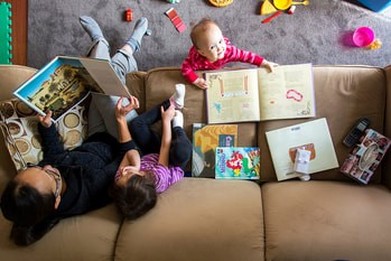
 RSS Feed
RSS Feed







